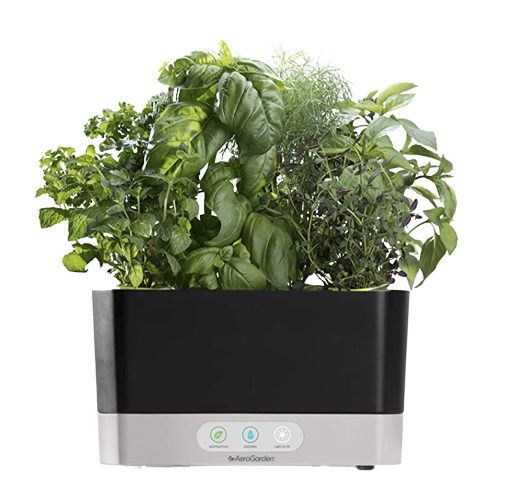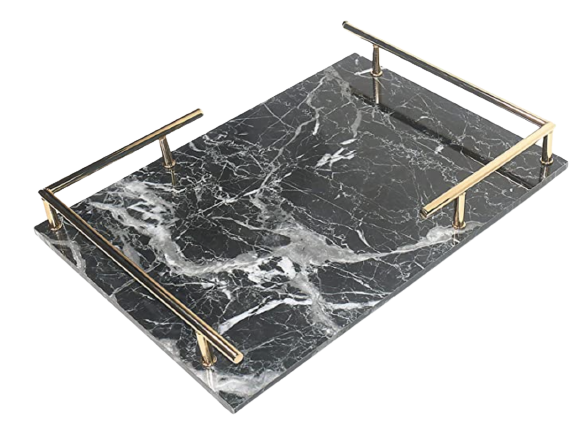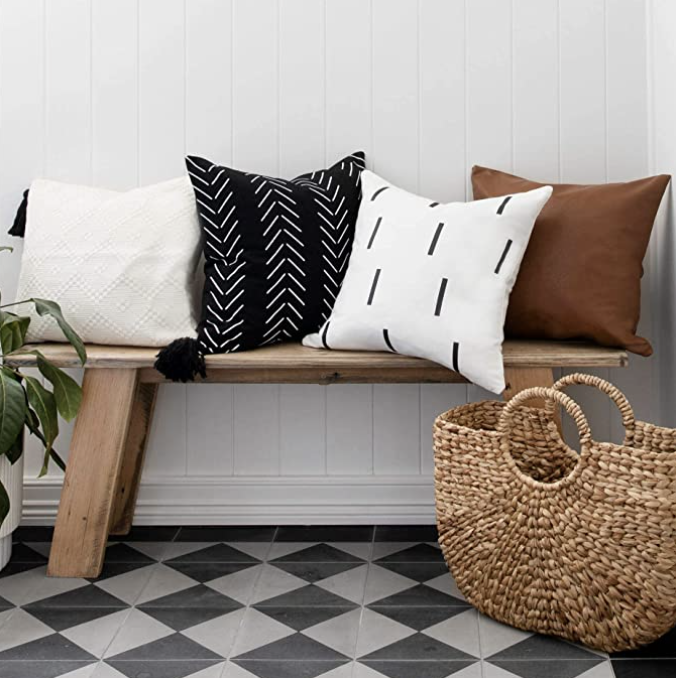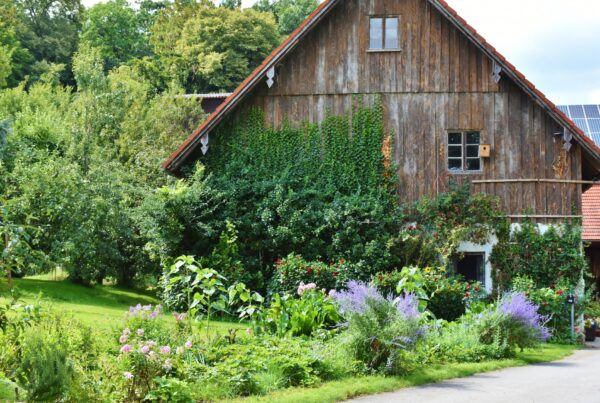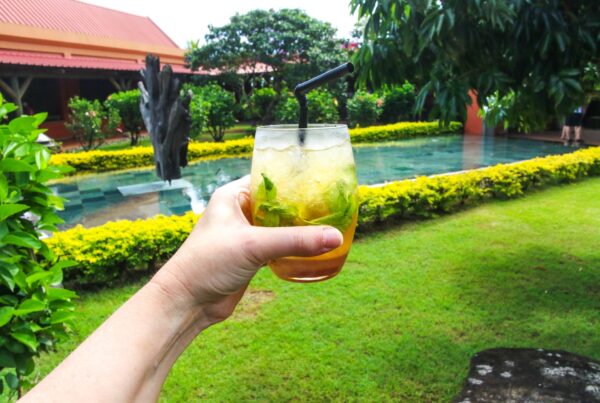Last Updated on February 22, 2023
While it may seem on the face of it an unkind thing to do, using a dog cage from early on in a dog’s life can actually be beneficial for the dog in many different ways. We tend to associate cages with trapping animals in, restricting their movement, constraining them – and this is certainly the case in many respects.
However, for dogs, they can be a space of safety and security. If the cage is introduced to the dog from a very early age, and it becomes a welcoming and enjoyable part of its daily routine, then the cage will be a useful and reassuring aspect of the puppy’s early days of training and getting used to its new home. It has also been proven time and again that from early puppy-hood cages are used effectively as a successful way of house training.
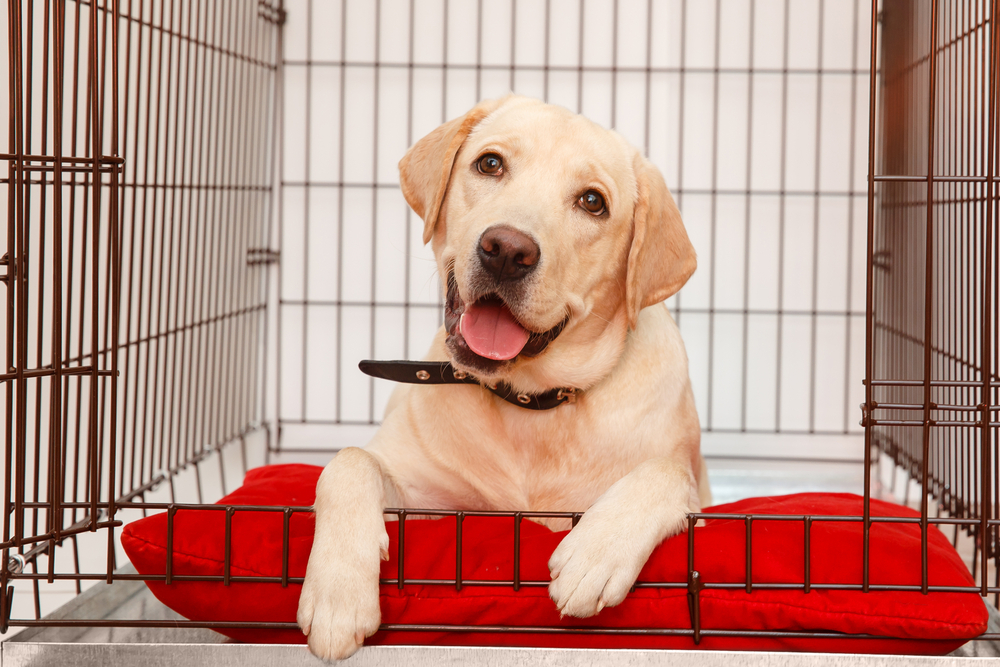
What you should look for when choosing a dog cage or crate
The cages come in all different shapes and sizes, and the most important is that it is of a suitable size for your pet. In general, it should be big enough for your dog to stand up, turn around, lie down and stretch out.
Metal or wire dog crates tend to be the most popular choice. For puppies who love to chew everything in sight, the metal cages are robust and durable, and can take no end of sharp teeth.
Plastic creates are cheaper, and the sides are thicker giving your pet a grater degree of privacy. However, for larger animals they are not very robust, become quite damaged if your puppy is a chewer, and do not always provide the right environment in which to keep your pet.
A secure and safe place for young puppies
If you pad the cage out with a familiar blanket and favourite toy, the cage becomes a safe and secure environment for your young pooch. They are after all no different to your own kids who love to sleep with their favourite cuddly toys night after night. Many new dog owners encourage young puppies to sleep in the cages at night, as it becomes a familiar environment which holds comforting smells to give them reassurance. It gives them that sense of routine that is so essential to both house training, and to settling an animal into its new home, and getting it used to its new owners.
It is also less distressing for the dog if you are travelling anywhere and need to secure the puppy somewhere safe to ensure its safety in transit. Your puppy is more likely to enjoy a stress free journey, safely tucked away in a familiar place, rather than roaming free and getting upset and not being able to settle.
In general, the idea of having a cage in the house is to keep the cage door open and for the dog to learn that it can go in and out of the cage, roaming freely, but still returning to a secure place at the end of the day. And at specific points during the day, to be closed into the cage (at least during the first few months of its life with you) so that it understands what is expected of it.
The perfect next step to potty training
Because your young dog has become so familiar with its comfortable cage, its natural instincts of not wanting to soil its main den area will kick in, and the puppy will be encouraged to go to the toilet in the appropriate place. When the puppy is still young, keep it in the cage for short bursts, which can encourage it to learn bladder and bowel control. As it grows that control instinct becomes stronger and your dog will have mastered the art of bladder control sooner rather than later.
Potty training a young puppy requires time and patience. Lots of patience! However, doing so with a crate has actually proved to speed the process up slightly. The ethos behind using the crate is to get the puppy into a routine of eating, sleeping and gong to the toilet so that it understands more quickly the rights and wrongs.
As the puppy gets used to sleeping in the cage, and has its bed and a favourite toy in their with it, it is unlikely to soil the cage. By keeping its to a strict schedule of no more than one and a half hours of crate time at a time, several times during the day, it will soon learn to control its bodily functions and subsequently become fully housetrained.
Artificial grass and pets
If you cage is quite large you can fit the floor with a strip of artificial grass. This is an ideal floor covering for a dog’s cage as it is easy to keep clean, and is soft under paw for the dog. It’s paws are cushioned against any hard surfaces, keeping it safe and comfortable, particularly during transit.
Transportable familiarity
We have already explained how it is important for your pet dog to have a safe and familiar environment while growing as a puppy, and when travelling. There may also be times when your dog is not well and requires veterinary care. In this respect you and your dog will be very grateful for the sights, smells and comfort of the cage to which it has become so accustomed.
If it happens that you need to take your dog into the vet’s to stay for several days, then you can rest assured that your dog is comforted by the surroundings that it knows, and draw your won comfort knowing that fact.
Ultimately there is no better place for a dog than to be able to roam freely in its owner’s house and garden. Providing that space is well secured, protecting the dog from possibly escaping onto a main road, and there is plenty of water around, you can be assured that your pooch will grow up into a happy, well balanced dog who will give endless love and affection to your family.



